
Europe and Central Asia – Regional Overview of Food Security and Nutrition 2023
Publication Series
Publications
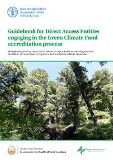
Guidebook for direct access entities engaging in the Green Climate Fund accreditation process
03/2021
The document aims to provide the main guidelines that potential entities should consider before engaging in the Green Climate Fund (GCF) accreditation process. It includes a brief description of the main steps of the GCF accreditation process, information on the most relevant policies, as well as an explanation of each section of the accreditation form.
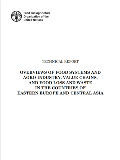
Overviews of food systems and agro-industry, value chains, and food loss and waste in the countries of Eastern Europe and Central Asia
01/2018
Tatiana LeGrand. This report overviews eighteen countries in Eastern Europe and Central Asia. The report examines agriculture sectors and food systems, relevant programmes, it reveals the status of agro-processing sector and value chain development activities, and it covers food loss and waste. In the final analysis it was concluded, that more research and data collection are needed to understand the extent of food loss and waste at regional and national levels.
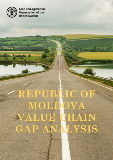
Republic of Moldova Value Chain Gap Analysis
01/2018
John O’Connell, Pavel Kiparisov. The goal of this study is to try to consolidate the information on countrywide value chain development gathered from various open sources and based on materials developed in one field mission by FAO officers with an emphasis on the plum and berry value chains. The authors did not aim at close examination of the selected value chains; rather, this paper is a general overview that will be a reference point for future field work in the country.
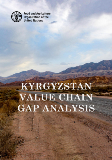
Kyrgyzstan Value Chain Gap Analysis
01/2018
John O’Connell, Pavel Kiparisov. The authors did not aim at close examination of the selected value chain; rather, this paper is a general overview that will be a reference point for future field work in the country. The recommendations provided in the paper will assist the FAO country office and the Government of the Kyrgyz Republic in decision-making and will inform other development organisations operating in the country about major value chain development activities.
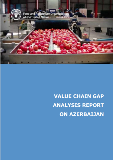
Azerbaijan Value Chain Gap Analysis
01/2018
John O’Connell, Zoltan Hradszky.The Value Chain Gap Analysis Report on Azerbaijan is meant to fill the gap in professional literature by providing a snapshot on how the government, the private sector and donor organizations work on creating an enabling environment supporting value chain (VC) development.

Assessment of Agribusiness Environment in Kyrgyzstan: Summary of Value Chain Gap Analysis and Recommendations
01/2018
John O’Connell, Pavel Kiparisov. The paper examines existing support measures for agriculture and covers the banking sector and trade policy. In addition, the paper describes main value chain actors and international development programmes.

An overview of legal and institutional frameworks and opportunities, challenges and recommendations for geographical indication products in Armenia, Georgia, Kyrgyzstan, the Republic of Moldova and the Russian Federation
01/2018
Geographical indication (GI) schemes can play a special role in promoting sustainable rural development, improving farm income and opening new export potential. Natural factors such as soil, climate and plant varieties play a major role in producing a unique product. Usually, GIs comprise knowledge and skills passed on from generation to generation, helping to protect local heritage.
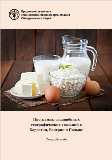
Geographical indication schemes in Croatia, Hungary and Poland
01/2018
General rules concerning geographical indications (for food products) are the same in all European Union countries. In light of this, the aim of the report is not to focus on the solutions of the community; rather, the report attempts to answer the question of how and for what purpose European quality policy tools are used in these countries.
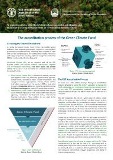
Strengthening country capacities for climate change adaptation and mitigation and finalization of country work programme for the Republic of North Macedonia
03/2021
This leaflet is one of the communication products developed by FAO and the Cabinet of the Deputy President of the Government of the Republic of North Macedonia in charge of Economic Affairs, in its role as National Designated Authority (NDA) to Green Climate Fund (GCF) in the frames of the country's second project under the GCF Readiness and Preparatory Support Programme

Private sector engagement in climate action in the Republic of North Macedonia
06/2021
This leaflet is one of the communication products developed by FAO and the Cabinet of the Deputy President of the Government of the Republic of North Macedonia in charge of Economic Affairs, in its role as National Designated Authority (NDA) to Green Climate Fund (GCF) in the frames of the country's second project under the Green Climate Fund Readiness and Preparatory Support Programme
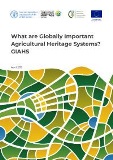
What are Globally Important Agricultural Heritage Systems? GIAHS
04/2021
The project contributes to improving livelihoods in rural areas and reduction of socio-economic divergence in the north-west region of Azerbaijan by supporting improvement of inclusive agri-food systems that promote local food heritage through Globally Important Agricultural Heritage Systems (GIAHS) and development of inclusive and efficient value chains for selected food products.

Guidelines for Developing a GIAHS Proposal
03/2021
The Guidelines for Developing a GIAHS Proposal Document, hereinafter referred to as “the Guidelines”, aim to provide clear recommendations to the authors of GIAHS proposal documents on the descriptions required in each part of the GIAHS application template. Therefore, the Guidelines are a supplementary document to the GIAHS proposal template.
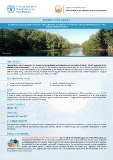
Strengthening country capacities for climate change adaptation and mitigation and finalization of Country Work Programme for the Republic of North Macedonia - Project factsheet
01/2022
This factsheet is jointly developed by the Cabinet of the Deputy President of the Government of the Republic of North Macedonia in charge of Economic Affairs, in its role as National Designated Authority (NDA) to GCF and FAO.
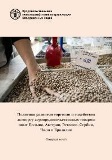
Agrifood marketing and export promotion policies: case studies of Austria, Brazil, Chile, Estonia, Poland and Serbia
01/2019
The purpose of this paper is to identify the best promotional practices implemented in different countries and share them with governments planning to adopt or review trade promotion policies and with stakeholders.
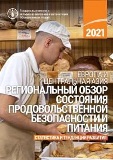
Europe and Central Asia – Regional Overview of Food Security and Nutrition 2021
12/2021
The state of food security and nutrition in the world, including that of the Europe and Central Asia region, was marked in 2020 by the outbreak of COVID-19 and resulting disruptions to markets, trade and food supply chains. The pandemic has had a negative effect on food security in the region.

FAO in Europe and Central Asia 2021
01/2022
FAO’s work in Europe and Central Asia and throughout the world is guided by the FAO Strategic Framework, reviewed every four years. In its support for the 2030 Agenda and its drive for a transformation to more efficient, inclusive, resilient and sustainable agrifood systems, the new FAO Strategic Framework 2022–2031 focuses on what are called the four betters – a set of goals that, when implemented, will help ensure that no one is left behind.
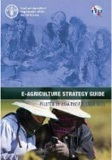
E-AGRICULTURE STRATEGY GUIDE: Piloted in Asia-Pacific countries
04/2016
This publication provides a framework for countries in developing their national e-agriculture strategies. These strategies would include an e-agriculture vision, an action plan, and a framework by which results can be monitored and evaluated. Like all strategies and plans, the outcomes of these processes are not static and changes in a country’s strategic context will require a dynamic approach to updating the strategy so that it remains relevant. 2016, 220 p.
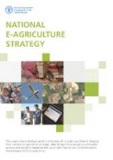
National e-agriculture strategy
01/2017
The e-agriculture strategy guide is a framework to assist countries in shaping their national e-agriculture strategy and identifying and developing sustainable services and solutions based on the use of Information and Communication Technologies (ICTs) in agriculture. 2017, 4 p.
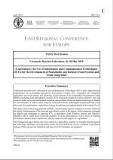
ERC/18/3
04/2018
This paper aims at discussing practical methods, concrete policy options and priority actions related to the digital transformation of the food and agricultural sectors in the region, while enhancing exchange on benefits and challenges in applying ICTs in agriculture, food livestock, forestry and fisheries. Policy options are identified, and areas for FAO assistance are proposed. 2018, 12 p.

Report of the Thirty-first Session of the FAO Regional Conference for Europe
05/2018
The 31st session of the FAO Regional Conference for Europe (ERC) was open to all FAO Members in the Europe and Central Asia region, to representatives of the United Nations Bodies and Specialized Agencies, and to selected Observers. The Conference included a Ministerial Roundtable on sustainable agriculture and food systems in Europe and Central Asia in a changing climate. A second major topic to be covered on the Conference’s opening day was E-agriculture. 2018, 21 p.
